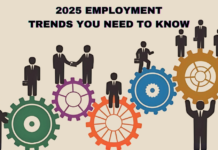With the goal of enhancing urban living through technology, the notion of smart cities has emerged as a beacon of innovation in the rapidly expanding period of urbanization. This development covers the path from early theoretical ideas to current applications, looking ahead to potential future developments. The creation of smart city technologies is evidence of how creative people can be when it comes to using technology to make cities more efficient, sustainable, and livable.
Early Concepts and Initiatives
The idea to incorporate information and communication technology (ICT) into urban administration is what gave rise to smart city technologies in the latter half of the 20th century. The original idea was straightforward yet revolutionary: employ technology to boost urban dwellers’ quality of life and increase city efficiency. Early efforts were concentrated on building digital infrastructures, which prepared the way for more advanced applications. Examples of these infrastructures include public Wi-Fi and broadband access.
The Role of ICT and IoT in Urban Development
The emergence of the Internet of Things (IoT) in the early 21st century was a turning point in the development of smart cities. IoT technology made it possible to connect tangible objects, cars, and buildings to the internet so that data could be exchanged and collected. The creation of sophisticated systems that could track, evaluate, and oversee municipal activities was made possible by this transition. ICT and the Internet of Things (IoT) have played a key role in making cities smarter, from traffic management systems that lessen traffic to smart energy grids that optimize power consumption.
Integration of Geospatial Technologies
The incorporation of geospatial technologies has been a crucial element in the development of smart cities. Global Positioning Systems (GPS), remote sensing, and Geographic Information Systems (GIS) are a few examples of these technologies that have given planning and operational efficiency the spatial intelligence they need. City planners may now examine resource distribution, environmental implications, and urban growth trends thanks to geospatial data, which helps to make better decisions.
The Rise of Big Data and Analytics
Data is exploding as a result of the growth of IoT devices and digital services, a phenomenon known as “big data.” Big data analytics has been used by smart cities to acquire insights into urban life, thereby enhancing waste management, water supply, public safety, and health services. Through real-time analysis of vast amounts of data, city administrators are able to recognize patterns, anticipate difficulties, and allocate resources more efficiently.
Citizen Engagement and E-Governance
The emphasis on e-governance and citizen involvement has been a significant evolution in smart city technologies. Smart cities have adopted digital platforms in an effort to encourage greater citizen-government interaction. Residents can report problems, access services, and take part in decision-making processes using mobile apps and web sites. Because of this digital involvement, governance is now more responsive, increasing accountability and transparency.
Sustainable Urban Development
Due to global issues like resource scarcity and climate change, smart city efforts now place a strong emphasis on sustainability. Greener cities are being created with the help of smart technology, which optimize energy use, cuts emissions, and supports environmentally friendly transportation options. Technology is at the forefront of designing ecologically friendly urban environments, from electric public transportation systems to smart buildings that use energy more efficiently.
Future Visions: AI, 5G, and Beyond
In the future, the introduction of artificial intelligence (AI) and 5G networks is expected to hasten the development of smart city technologies. AI has the power to completely transform municipal operations by increasing the autonomy and intelligence of systems, such as automated traffic control and predictive policing. In the meantime, 5G technology promises to deliver the incredibly fast and dependable connectivity required for the next wave of smart city applications, such as sophisticated IoT services and driverless cars.
Challenges and Opportunities
The path to fully realized smart cities is not without difficulties, despite the encouraging developments. Concerns including cybersecurity, data privacy, and the digital gap must be addressed if smart city technologies are to benefit all residents equally.
Conclusion
To sum up, the emergence of smart city technology signifies a paradigm change in urban planning. Technology has continuously influenced our image of what cities may become, from the early days of digital infrastructures to the sophisticated applications powered by IoT, AI, and 5G. Future-oriented, the continuous advancements in smart city technology are expected to improve urban living conditions even more, resulting in more sustainable, effective, and inclusive cities. The development of smart cities is evidence of the limitless opportunities that arise from the meeting point of urban living and technology, paving the way for a more intelligent and connected society.






